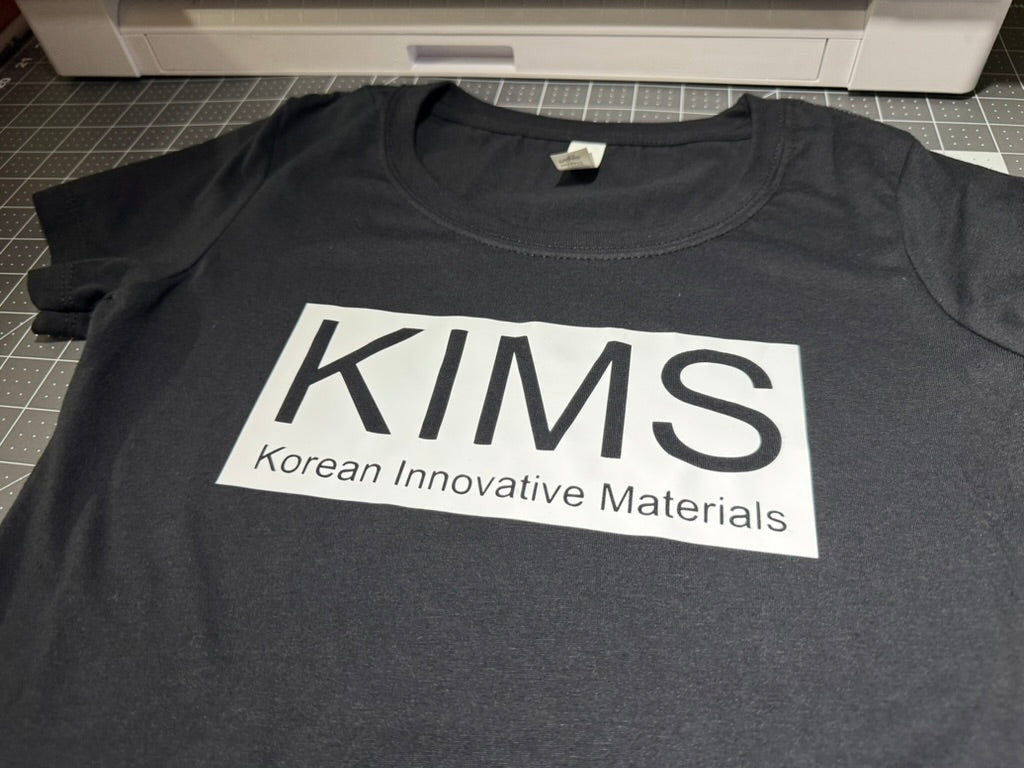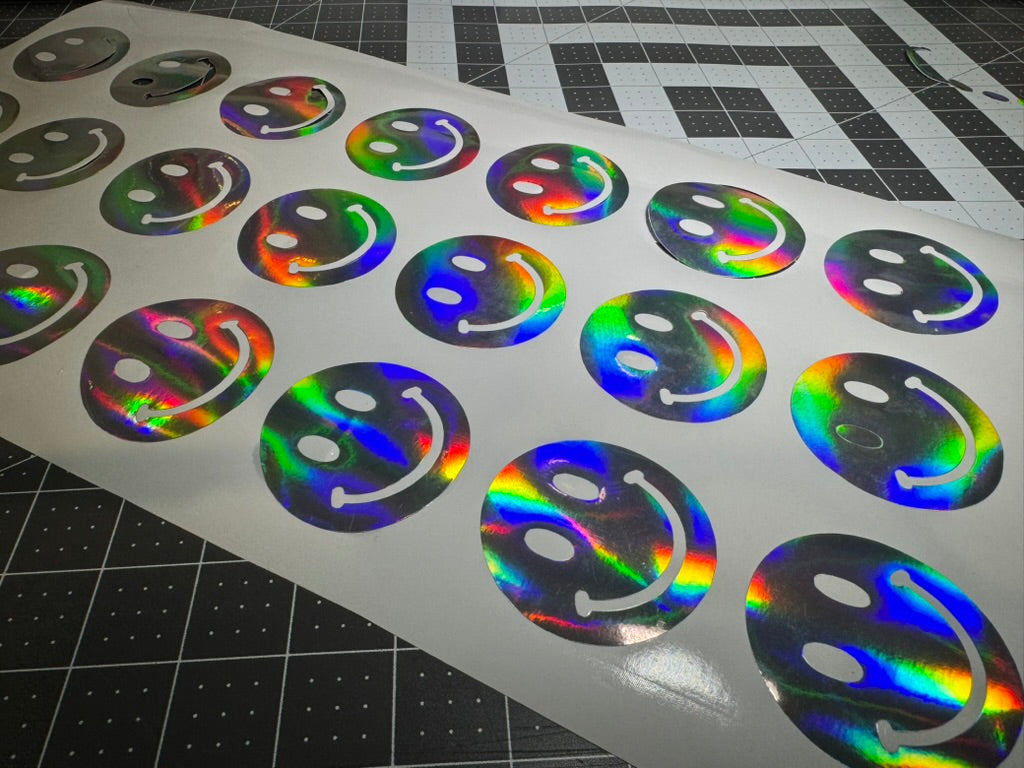Introduction
Vinyl application has evolved beyond traditional surfaces like fabric and paper. With advanced techniques, you can now successfully apply vinyl to unusual surfaces like wood, glass, metal, and leather. Each of these materials presents unique challenges that require specific preparation methods and application techniques.
Standard vinyl application methods used on cotton or polyester don't always work the same way on less porous or more flexible materials. Understanding the properties of each surface helps you adjust your technique for the best results.
This guide explores the specialized approaches for each surface type, highlighting preparation methods, application techniques, and finishing processes that ensure optimal adhesion and longevity.
Common Surfaces for Vinyl Application
Wood, glass, metal, and leather each present different challenges for vinyl application. These surfaces are less predictable than fabric or plastic and often require additional preparation.
Wood is porous and absorbs adhesive, which can reduce stickiness. Glass is extremely smooth, causing vinyl to lift if not properly applied. Metal conducts heat quickly, affecting how vinyl performs during application. Leather is flexible and textured, making it difficult for vinyl to adhere evenly.
|
Surface |
Difficulty Level |
Best Vinyl Type |
Key Challenge |
Primary Benefit |
|---|---|---|---|---|
|
Wood |
Moderate |
Permanent Adhesive |
Porous surface |
Natural look |
|
Glass |
High |
Removable Adhesive |
Non-porous surface |
Clean appearance |
|
Metal |
High |
High-Temp Vinyl |
Heat conductivity |
Durability |
|
Leather |
High |
Flexible HTV |
Texture, flexibility |
Premium feel |
With the right techniques and materials, you can overcome these challenges and create professional-looking vinyl applications on these unusual surfaces.
Essential Tools and Materials for Applying Vinyl
Success with unusual surfaces starts with having the right tools. Beyond basic vinyl application equipment, you'll need specialized items for these challenging materials.
Surface primers: These products create a better bonding surface. Wood primers seal porous areas, while glass primers improve adhesion on smooth surfaces.
Heat guns with temperature control: Different surfaces respond differently to heat. Adjustable settings prevent damage to heat-sensitive materials like leather.
Specialized squeegees: Soft squeegees work better on textured surfaces like leather, while firmer ones are ideal for smooth glass or metal.
The right cleaning products are essential for each surface:
-
Wood: Dust removers and mild cleaners
-
Glass: Ammonia-free glass cleaner and isopropyl alcohol (91%)
-
Metal: Degreasers and rust removers
-
Leather: pH-balanced leather cleaners
Knifeless tape is invaluable for precision cutting on delicate surfaces. This special tape has a filament that cuts vinyl without damaging the surface underneath.
Edge sealers help prevent lifting on porous surfaces like wood or flexible materials like leather.
Quality vinyl makes a difference too. KIMS Direct offers vinyl formulations specifically engineered for unusual surfaces, with superior cutting precision and easier weeding.
Preparing Wood, Glass, Metal, and Leather for Vinyl
Proper surface preparation is crucial for successful vinyl application. About 80% of application success depends on how well you prepare the surface.
1. Wood Cleaning and Sanding
Start by sanding the wood to create a smooth surface. Use medium-grit sandpaper (120 grit) first, then finish with fine-grit (220+). Always sand in the direction of the wood grain.
Remove all dust with a tack cloth or vacuum with a brush attachment. Even small dust particles can create bubbles under your vinyl.
Apply a wood primer to seal the porous surface. This prevents the vinyl's adhesive from being absorbed into the wood.
Check the wood's moisture content—it should be below 12% for optimal vinyl adhesion. Different wood types require different approaches:
-
Hardwoods (oak, maple): Less porous, may need less primer
-
Softwoods (pine): More porous, often require additional sealing
2. Glass Degreasing and Alcohol Wipes
Glass must be at room temperature during application. Cold glass causes condensation that interferes with adhesion.
Clean the glass thoroughly using these steps:
-
Wash with a glass-safe degreaser
-
Rinse completely
-
Wipe with 91% isopropyl alcohol using lint-free cloths
Test for invisible residues by applying a small piece of vinyl to the cleaned area. If it lifts easily, the glass isn't clean enough.
Textured or frosted glass requires special attention. The vinyl may not contact the entire surface, so consider using a glass-specific primer to improve adhesion.
3. Metal Oxidation Removal
Check for oxidation (discoloration or powdery residue) on the metal surface. Remove it using an abrasive pad or wire brush.
After cleaning, neutralize the surface with a pH-balanced cleaner to remove any residues that could interfere with adhesion.
Allow metal to reach room temperature before application. Metal-specific cleaning tips include:
-
Aluminum: Use alcohol-based cleaners
-
Steel: Remove any rust completely
-
Chrome: Avoid abrasive cleaners that could scratch the surface
Test a small area first to ensure good adhesion before applying your full design.
4. Leather Primers and Gentle Cleaning
Clean leather using products specifically designed for leather. Avoid alcohol-based cleaners that can dry out the material.
If the leather has been recently conditioned, wait several days before applying vinyl. Oils in conditioners can prevent proper adhesion.
Use primers designed for flexible materials to help the vinyl move with the leather without peeling or cracking.
Different leather finishes affect vinyl application:
-
Smooth leather: Easier for vinyl adhesion
-
Pebbled leather: May require more pressure during application
-
Suede: Not ideal for vinyl application
Step-by-Step Application Methods for Unusual Surfaces
While each surface requires specific adjustments, this general process works for most unusual surfaces.
Step 1: Measure and Position With the Hinge Method
The hinge method helps position vinyl accurately before committing to full application. Here's how it works:
-
Measure the application area carefully
-
Position the vinyl where you want it
-
Apply a strip of masking tape across the top to create a "hinge"
-
Fold the vinyl back along the hinge to expose the back
For curved or uneven surfaces, you might need multiple hinge points to keep the vinyl properly aligned during application.
Take a photo of the positioned vinyl before application. This gives you a reference if you need to reposition.
Step 2: Apply Soapy Water for Wet Application
Wet application works well for glass and metal surfaces. Mix a solution of water with a tiny amount of dish soap (just 1-2 drops per 16 ounces of water).
Spray the solution lightly on the surface and on the adhesive side of the vinyl. This allows the vinyl to "float" on the surface for easier positioning.
For porous surfaces like wood or leather, wet application isn't recommended. The moisture can be absorbed and prevent proper adhesion.
Temperature matters—keep your solution at room temperature (68-75°F) for best results.
Step 3: Remove the Liner and Squeegee
Peel the liner away slowly at a 45-degree angle. Keep tension consistent to avoid stretching the vinyl.
Use your squeegee to press the vinyl into place, starting from the hinge and working outward in overlapping strokes.
Adjust your technique based on the surface:
-
Glass/Metal: Use firm pressure with a hard squeegee
-
Wood/Leather: Use moderate pressure with a softer squeegee
Watch for air bubbles as you go. Small bubbles can be pushed out toward the edges. For larger bubbles, you may need to lift the vinyl slightly and reapply.
For large designs, work in sections to maintain control and prevent stretching or misalignment.
Step 4: Heat and Press for Firm Adhesion
Heat helps activate the adhesive for a stronger bond. Use a heat gun or heat press with the appropriate temperature for your surface:
-
Leather/Wood: 275-300°F
-
Metal/Glass: 225-250°F
Apply heat evenly by moving the heat source in a sweeping motion. Don't hold it in one spot for too long.
After heating, press firmly on the vinyl and allow it to cool completely before testing adhesion. If edges lift, apply heat again briefly and press down firmly.
Advanced Tactics With Knifeless Tape and Heat Stretching
Once you've mastered basic application, these advanced techniques can help with complex projects.
1. Setting Up Knifeless Tape
Knifeless tape is a game-changer for cutting vinyl on delicate surfaces. It has a thin filament inside that cuts the vinyl when pulled, eliminating the need for a blade that might damage the surface.
For curves, gently bend the tape along your desired cutting path. For straight lines, use a ruler as a guide for placement.
When creating seams between vinyl pieces:
-
Place the tape where you want the seam
-
Apply both vinyl pieces overlapping the tape
-
Pull the filament to create a perfect cut
For complex shapes, place the tape before positioning the vinyl. This allows you to trim precisely after application.
Pull the filament slowly and at a consistent angle for the cleanest cuts. Too much speed can tear the vinyl or create jagged edges.
2. Heat Stretching Curves and Edges
Heat stretching helps vinyl conform to curved or textured surfaces. Different vinyl types have different stretch limits:
-
Standard vinyl: Minimal stretch
-
Premium cast vinyl: Good stretch capabilities
-
Conformable vinyl: Designed specifically for curves
When stretching vinyl:
-
Heat a small section until pliable
-
Gently stretch the vinyl over the curve
-
Hold in position until cool
Avoid overstretching, which can cause the vinyl to become thin and potentially tear. Practice on scrap material to get a feel for how much heat and stretch your vinyl can handle.
After stretching, allow the vinyl to cool completely while maintaining its position. This helps it "remember" the new shape.
Troubleshooting Common Adhesion Problems
Even with careful preparation, you might encounter adhesion issues. Here's how to address common problems.
1. Fixing Peeling and Bubble Formation
Peeling edges are common on unusual surfaces. The causes include:
-
Dirty surfaces: Oils or dust preventing proper adhesion
-
Improper temperature: Not enough heat to activate adhesive
-
Surface texture: Rough areas creating gaps in contact
For small bubbles, use a pin to make a tiny hole at the edge of the bubble, then press out the air. For larger bubbles, you might need to lift that section and reapply.
Edge sealing helps prevent peeling. Apply a thin line of edge sealer around the perimeter of your vinyl after application.
For persistent problems, consider using a stronger adhesive vinyl or applying a surface-specific primer before installation.
2. Addressing Inconsistent Surface Textures
Textured surfaces like wood grain or pebbled leather create application challenges. The vinyl may not contact the entire surface, leading to spotty adhesion.
To improve adhesion on textured surfaces:
-
Use thicker vinyl with stronger adhesive
-
Apply more pressure during installation
-
Consider heat conforming to press vinyl into texture variations
For highly textured surfaces, applying vinyl in smaller sections gives you better control. Each piece can be pressed firmly into the texture before moving to the next section.
Sealing and Finishing Techniques for Long-Lasting Results
The final steps ensure your vinyl application lasts as long as possible.
1. Using Clear Sealants or Edge Locker
Edge sealers create a protective barrier that prevents lifting. Different surfaces require different sealants:
-
Wood: Water-based acrylic sealants
-
Glass/Metal: Solvent-based sealants
-
Leather: Flexible sealants
Apply sealant with a small brush or applicator, focusing on the edges where lifting typically begins. Allow the sealant to dry completely according to the manufacturer's instructions.
Test any sealant on a small area first to ensure it doesn't damage your vinyl or the surface.
2. Post-Heating and Final Inspection
Post-heating activates the adhesive fully for maximum bond strength. Heat the entire application one final time, then allow it to cool naturally.
Inspect your work carefully, looking for:
-
Bubbles or air pockets
-
Lifting edges
-
Proper alignment
-
Complete adhesion
Proper care instructions depend on the surface:
-
Wood: Avoid excess moisture
-
Glass: Use non-ammonia cleaners
-
Metal: Avoid abrasive cleaners
-
Leather: Clean with leather-safe products
Elevate Your Creations With Advanced Vinyl Materials
The right vinyl makes a significant difference when working with unusual surfaces. High-quality vinyl cuts more precisely, weeds more easily, and adheres more effectively.
Premium vinyl formulations like those from KIMS Direct are engineered specifically for challenging applications. Their superior cutting precision and easier weeding can reduce production time by up to 30%.
For your next project on wood, glass, metal, or leather, consider exploring our premium vinyl collection designed specifically for unusual surface applications at KIMS Direct.
Frequently Asked Questions About Applying Vinyl to Unusual Surfaces
How long does vinyl last on wood surfaces when properly applied?
Vinyl properly applied to sealed indoor wood typically lasts 5-7 years when protected from direct sunlight and moisture.
What type of vinyl adheres best to glass surfaces?
Premium permanent adhesive vinyl with glass-specific formulations provides the strongest bond on glass, with clear or frosted varieties offering excellent longevity.
Can heat transfer vinyl be applied to leather successfully?
Yes, heat transfer vinyl can be applied to leather using lower temperature settings (275-300°F) and a protective pressing sheet, though specialty leather-specific vinyl formulations yield the best results.
How do I prevent vinyl from peeling off metal surfaces?
Prevent vinyl peeling on metal by thoroughly degreasing the surface, using metal-specific primers, applying with firm pressure, post-heating to activate adhesive fully, and sealing edges with compatible edge sealant.
What techniques work for applying vinyl to textured wood?
For textured wood, use thicker premium vinyl with strong adhesive, apply with heat while pressing firmly into grain patterns, and consider a clear sealant over the entire application to prevent edge lifting.







